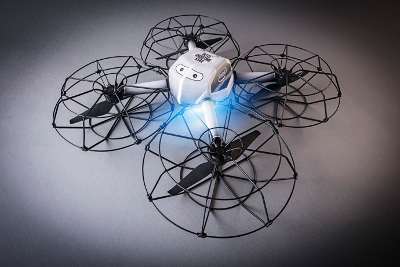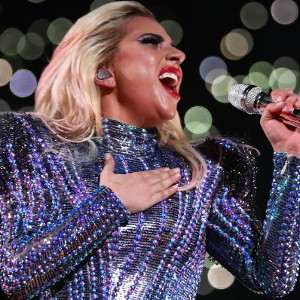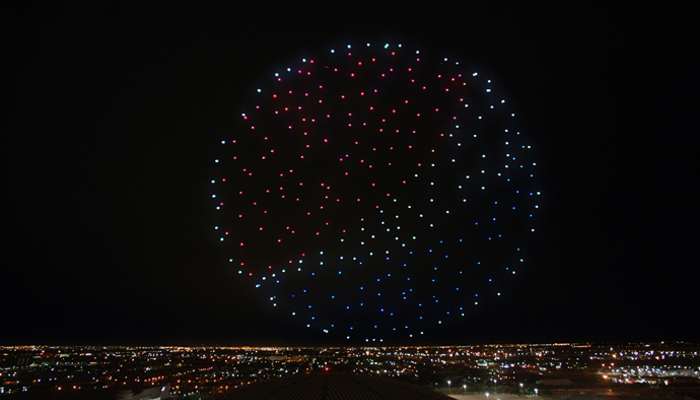Like everyone else watching the Super Bowl, I was blown away by the half-time show. But I barely noticed the music or even the fireworks once I saw the drones. Wow-just how did they do that?
What They Did Lady Gaga partnered with Intel Corporation to turn the sky above Houston into a canvas of light. Her palatte? A small swarm of 300 Shooting Star Drones which flew in unison to create a series of shapes, patterns and colors. The entire flight path was then synced up to Lady G's soundtrack down to the second.
How They Did It Intel combined multiple technologies to deliver one wow of a show. First they used 3D animation software to plot a scale model of the images that would light up the sky. Intel's Shooting Star drones were then equipped with multi-color LED lights that as a group could shift to create up to four billion different color patterns. Each drone was positioned using a unique identifying code that broadcast specific flight directions to each quad-copter over medium range RC transmitters. GPS sensors, altimeters and accelerometers on board each drone gave an exact read of its location in real time.

Now the truly wild part: Just how many people were sitting at the controls to make sure all 300 drones didn't crash in to one another? ONE. Just one pilot ran the whole show from a computer console.
What it means for your kids? As an educator, I want parents and schools to think about how technology should change the way kids learn. To make the Shooting Star system work, Intel engineers had to seamlessly integrate multiple technologies of digital mapping, sensor data, radio controls and simultaneous data handling. No small feat. An even bigger feat? Persuading schools to teach kids like Intel engineers. To gain the skills they will need to master a digital world, children will require an educational mindset that encourages kids to see the world in new ways.
Here is a quick sample.
- Stacking Skills. In our new age, important problems cannot be solved by mastering one skill. Instead, we must stack multiple skills one on top of the other.
- Network Intelligence. Imagine what would have happened in Houston if just ONE drone went off course. In reality, all 300 drones were constantly overshooting and correcting by communicating back to home base. To get Lady Gaga’s performance to work, Intel engineers had to think like a network where each individual machine partnered together with the whole group.
- Using Ecosystems, Not Just Skills. None of the engineers who built Shooting Star ever took a class on “massive drone flight 101.” Instead, they learned skills that made them part of a larger ecosystem, a team that traded information and solved problems together.

This is exactly what our schools should give kids. The ability to build sophisticated results upon individual skills, to coordinate with many partners at once and to draw knowledge from a whole ecosystem of collaborators. When our schools reach this goal, it will be more spectacular than anything even Lady Gaga can dish out.
Dr. Allen Selis is the founder of Tech EdVentures, which brings engineering and coding skills to students in grades K-8. Tech EdVentures offers staff training, program design and direct consultation to schools and district leadership. You can reach Dr. Selis at Office@TechEdVentures.com or on Twitter @TechEdV.
Learn More About Intel's Shooting Star Drones
The drones behind Lady Gaga's show are also the star of Walt Disney World's rendering of a beautiful scene from the film

 300 Intel Shooting Star Drones light up the sky over Houston for Lady Gaga's halftime show.
300 Intel Shooting Star Drones light up the sky over Houston for Lady Gaga's halftime show.